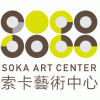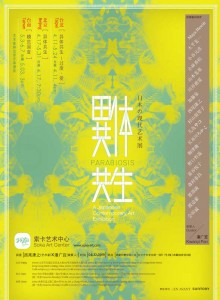 |
Soka Art Center
2F, No.57, Sec.1,
Dunhua South Road,
Taipei, Taiwan map *
tel: +886 2 2570 0390
fax: +886 2 2570 0393
send email
website
|

Enlarge
|
| Parabiosis
|
|
| by Soka Art Center
Location: Soka Art Center
Artist(s): Fukaya ETSUKO, KATO Izumi, MURAYAMA Ruriko, NISHIO Yasuyuki, ODANI Motohiko, WATANABE Go, MORIMURA Yasumasa
Date: 11 Apr - 24 May 2009
Curator : Kwanyi Pan
Ever since the success of Murakami Takashi, the main contribution made by Japanese contemporary art on the global stage has come from such sub cultural forms as Anime, computer games, Otaku and Kawaii. Moreover, a review of work by a new generation of contemporary artists reveals an attempt to combine traditional Japanese aesthetics and the innovative artistic expressive forms inherent in the language of western aesthetics. For the purposes of this exhibition, Soka Art Center invited 17 Japanese contemporary Japanese artists to work with 7 stylistically distinctive Japanese art galleries. The result is a joint exhibition of Japanese contemporary art presented simultaneously in China and Taiwan, focusing on the three individual but related themes of “Parabiosis” in Beijing, “Egui - Love” in Taipei and “Paradigm, Paradise” in Tainan. This exhibition marks an attempt to present an ordered and historical introduction to Japanese modern art. It is also the first time the three locations have hosted a comprehensive program presenting such an alternative view of the genre.
Parabiosis
“Parabiosis” is a technical term from biology and botany that refers to the experimental combination of two organisms anatomically or physiologically. The objective is to use this process to highlight the abnormal changes and interdependence of heterogeneous biological organisms or to experiment with the evolutionary process of the two different organisms after they are combined. The word “parabiosis” is not limited in its application to biological experiments, its can also be applied to twenty-first century society, particularly the mixing of styles and forms witnessed in post modernist contemporary cultural and art phenomenon. With the rapid spread of globalization and the mutual interaction of eastern and western cultures this has facilitated, the phenomenon of “parabiosis” identifiable in Japanese contemporary art can perhaps best be considered a synthesis of the evolved characteristics of material and spirit.
Japan was the first Asian country to actively promote westernization and as such, the impact of westernization on Japan can be traced as far back as the Meiji Restoration (1868). At the same time as Japanese artists have accepted “alienation” they have also explored distinctively Japanese expressive forms and aesthetics in an attempt to create their own vocabulary based on western artistic language. It is not difficult to see the search for self existence in the works of Japanese contemporary artists, as in the contrast between empty bodies and the exaggerated surface tension of skin. Using extreme methods to express or explore pain and emptiness is a reaction on the part of a new generation of artists to certain social phenomena. In this context, “parabiosis” represents a reflection by those artists on the extent to which they are “losing themselves” as a result of westernization.
Given the combination of two organisms as genetically and physically different as eastern and western culture, Japanese art needs to identify a common language. As such, promoting the uniqueness of Japanese aesthetics, wherein “compromise between east and west” was the defining expression of the Meiji Restoration, is perhaps the best possible example of cultural “parabiosis.”
Egui - Love
Contemporary Japanese culture is much more than otaku, anime, street culture or consumer culture based on commerce and fashion design. At the same time, a younger generation of artists has accepted the nurturing of western culture and transcended the anime “image” associated with Japan, combining artistic expression with exquisite traditional technique. From a seemingly self-contradictory dilemma to the establishment of an aesthetic of pain, these artists have clearly developed their own distinctie aesthetic style.
In Japanese, excessive expression is called “Egui” a frequently heard term in the slang of young people. In Chinese it is usually translated as “excessive”, “black humor” or “horrible”. It should be noted that socially repressed Japanese society, with its focus on efficiency and order, attracts much negative criticism in the work of the new generation of artists. They adopt powerful visual methods in satirizing society, a common theme being exaggerated violence and contentious issues. This is a form of “excessive” expressionism unique to Japanese contemporary artists. We retain the Japanese word “Egui” because no other term adequately expresses its range and because it is arguable that this expressive methodology has never seen in the art of other countries.
Japanese Art + Western Art = Paradigm, Paradise
As we delineate the development of Japanese contemporary art, we find that Japanese artists have not only mastered eastern and western vocabulary through comprehensive study they also transcend genres and eras in their combination of aesthetics and technique, a defining characteristic of post-modernism. The way in which artists born in the 1970’s produce flowing paintings, diverse sculpture and conceptually transcend media showcases an attitude of constant experimentation with different combinations and in this context, the expressionism whether of performance art or different materials appears completely fresh and new.
Following Japan’s defeat in WWII and the healing of the wounds and self contradictions of that period, contemporary artists now tend even more in the direction of mixing the spirit of the “Japanese soul” with western language and technique. This both represents mainstream ideology in Japan and is also an important thread in the history of Japanese contemporary art. Today the focus is on Japanese spirit, skillfully mixing the fine aesthetics of traditional techniques and handicrafts. Even now after many years of being tested by western ideas and approaches, contemporary art in Japan has assimilated western trends and artistic language whilst retaining and oftentimes reinterpreting traditional Japanese elements. In other words, these artists have discovered their own personal paradigm and paradise through cultural “parabiosis.” |
|
|
|
|
